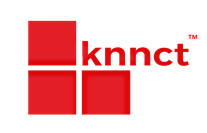In the wake of escalating interest rates, Canadians are at a crossroads. The past 16 months have witnessed a depletion of savings and a surge in credit utilization to navigate these financially challenging times. This has resulted in an upsurge of debt burdens, putting significant pressure on consumers across the country. In this first installment of our series, we will unravel the intricacies of debt management and credit score enhancement in a structured and pragmatic manner.
The Current Economic Landscape
The global surge in interest rates has significantly impacted the economic landscape. By the close of 2022, the average mortgage rate in advanced economies had surged to an astounding 6.8%, more than double the figure recorded in 2021. Countries most susceptible to this phenomenon are those with substantial household debt combined with a significant proportion of variable rate mortgage holders. Unsurprisingly, Canada stands atop this list.
Despite the worldwide average household debt-to-income ratio remaining relatively stable since 2007, Canada has experienced a marked surge in household debt in recent years, solidifying its position as the leader among G7 nations. This surge in debt has led to an alarming increase in missed payments on non-mortgage credit, underscoring the extensive financial pressure faced by Canadian consumers.
Equally indicative of these financial challenges is the discernible shift in consumer behavior. The average Canadian now allocates 21.5% more of their monthly expenditure to credit cards compared to pre-pandemic levels. This trend is emphasized by the average monthly spending per credit card holder, which reached over $2,200 in Q2/2023 – marking a significant $400 escalation from the first quarter of 2020.
Moreover, a recent Angus Reid survey has revealed the extent of financial distress experienced by Canadians. A noteworthy 30% of Canadians are grappling with financial hardship, with a staggering 45% of mortgage holders acknowledging the difficulty of managing their monthly payments – a 34% increase from the previous year.
Paving the Path to Financial Recovery
Amidst this intricate web of debt, lies the possibility of reclaiming financial control. If you find yourself grappling with the repercussions of interest rate hikes, it is imperative to regain a sense of agency over your financial future. And what better way to initiate this process than by establishing a comprehensive plan.
1. Creating an Exhaustive List of Debts: The foremost step in this journey is confronting your financial obligations head-on. Compile an exhaustive list of all your debts. Document the total amount of each debt, the minimum monthly payment, and the associated interest rate. This exercise serves as a stark reminder of the extent of your financial commitments.
2. Developing or Refining Your Budget: Your budget serves as a financial compass, steering your expenditure in alignment with your goals. Developing a meticulous budget or refining your existing one is paramount. Prioritize essentials over discretionary expenses, and meticulously dissect your financial outflows to identify areas where judicious cost-cutting is feasible.
3. Selecting an Appropriate Strategy: Just as every individual’s financial journey is unique, so should be your strategy for debt repayment. Armed with a comprehensive understanding of your debts, meticulously select a strategy that harmonizes with your financial landscape. Whether it’s the snowball method, the avalanche method, or a personalized approach, the essence is to discover a strategy that resonates with your aspirations and financial resources.
4. Establishing a Pragmatic Timeframe: The crux of effective debt repayment lies in striking the balance between ambition and pragmatism. Setting a pragmatic timeframe for debt elimination is pivotal. While an overly extended timeline may dampen motivation, an overly aggressive one may result in burnout and exacerbate financial stress. The optimal timeframe should encapsulate a healthy blend of challenge and attainability.
The Role of Collaborative Endeavors
While embarking on this journey to financial recovery, it is essential to recognize that you are not alone. Navigating the labyrinth of debt management may appear daunting, but the silver lining is the availability of collaborative resources. Consider partnering with platforms like MyCreditz.com, which furnish you with tools and insights to streamline your efforts and bolster your credit score. Your credit score is not merely a numerical representation; it serves as a gateway to favorable interest rates and heightened financial stability.
Furthermore, it’s pivotal to acknowledge the intrinsic connection between your credit score and debt load. A lower credit score translates to higher interest rates, exacerbating your financial challenges. Therefore, as you draft your debt repayment strategy, vigilantly monitor the trajectory of your credit score.
Stay attuned for the subsequent installment of our series, where we will delve deeper into specific strategies tailored to empower you on your quest to liberate yourself from the shackles of debt and reclaim your financial equilibrium. Remember, your financial voyage is inherently unique, and there exists a pathway meticulously tailored to your circumstances. Do not allow debt to dictate your destiny; seize control of your financial narrative today and chart a course toward calmer fiscal waters.

